03:16
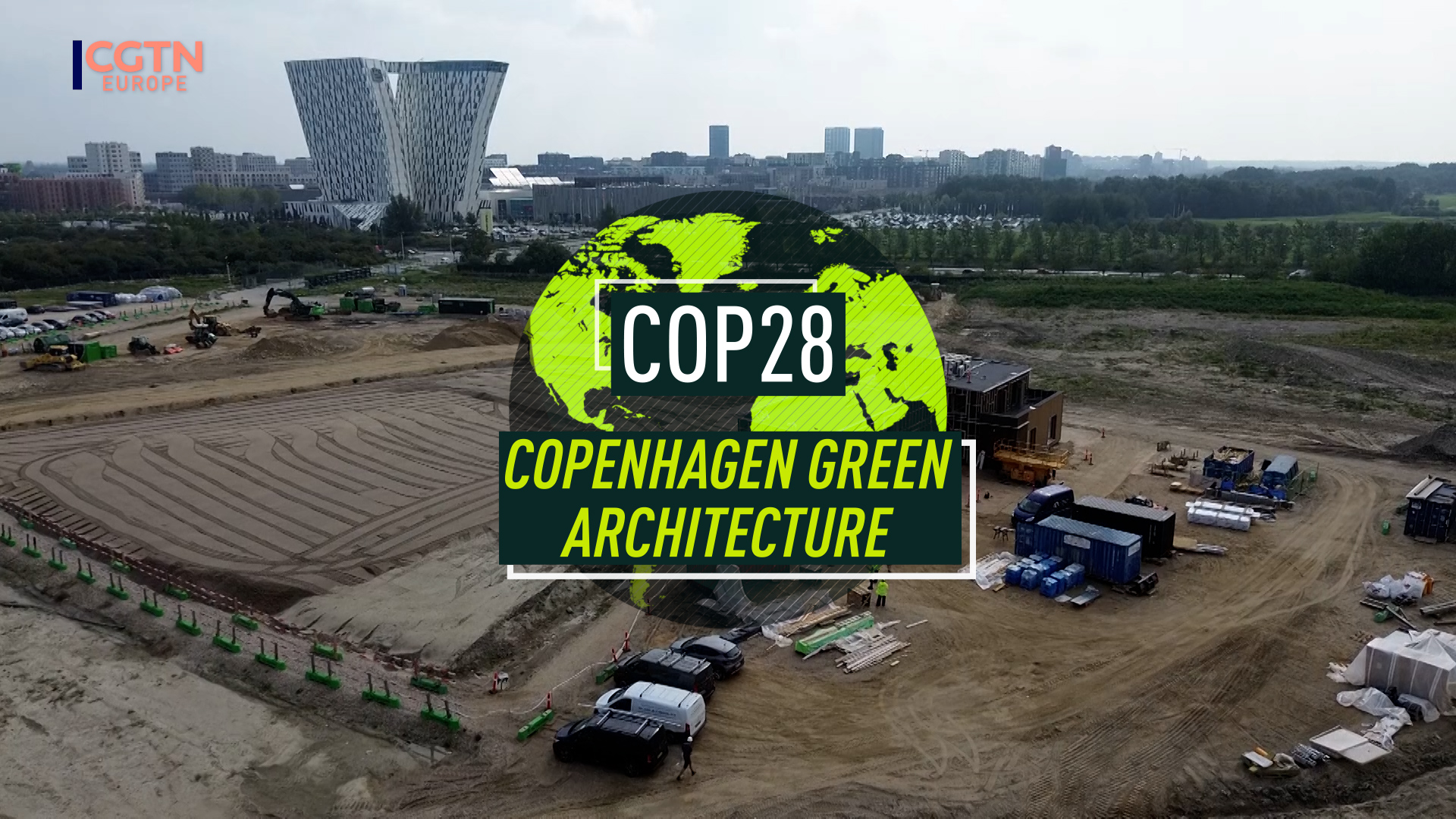
Copenhagen is building a wooden neighborhood on a former landfill area which is set to become one of the landmarks of the eco-friendly city. The Danish capital is in fact using its current UNESCO architecture capital title to promote green construction.
The Fælledby neighborhood on the outskirts of the 600,000-population city is designed by the Henning Larsen firm and will provide homes to five thousand people. Despite covering two-thirds of a former grass field with wooden buildings, the project is set to triple the area's biodiversity through birdhouses and other animal habitats integrated in the facades.
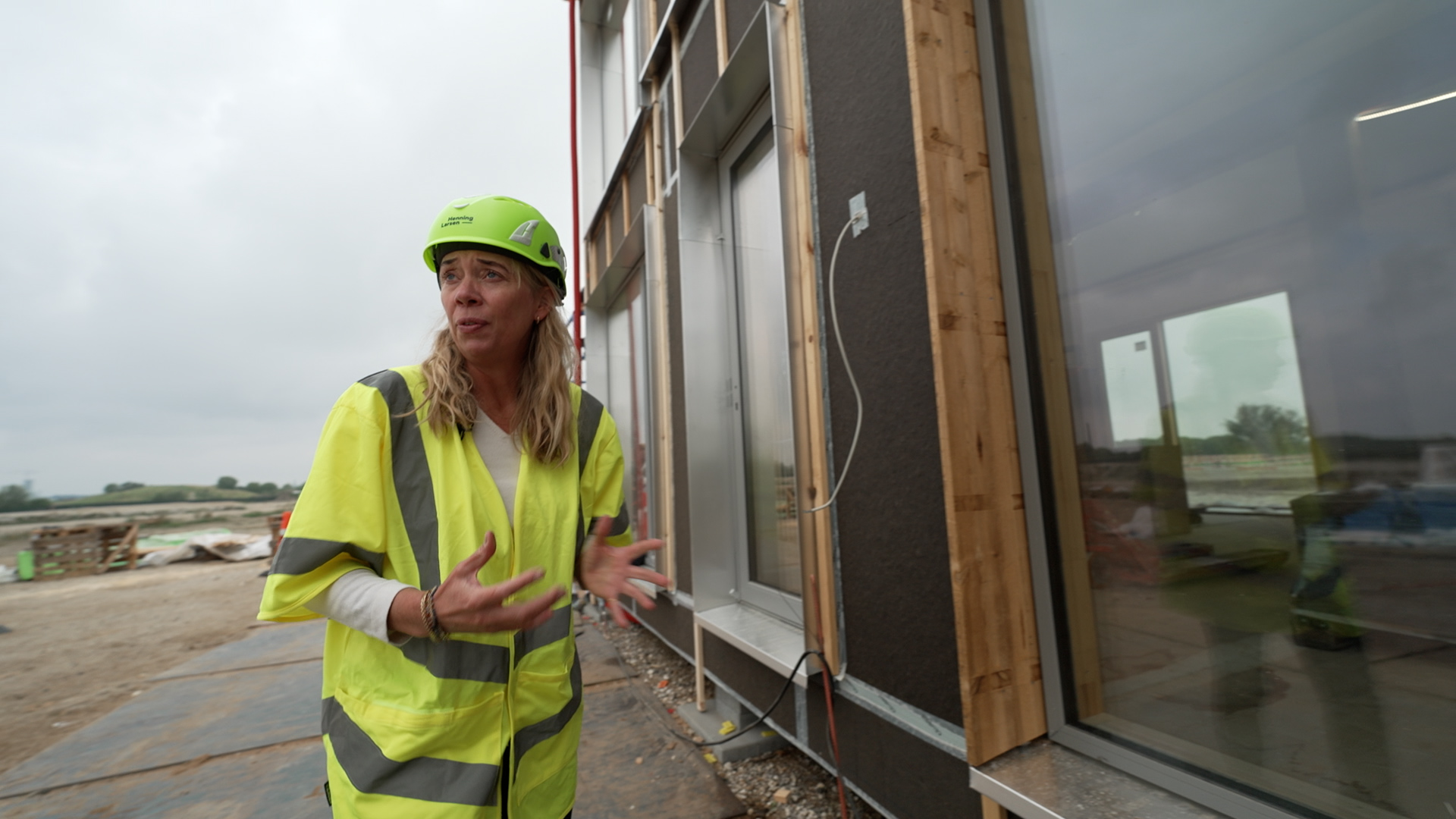
Lead designer Signe Kongebro is convinced her wooden city leads the way into the future. /Dworschak/CGTN
Lead designer Signe Kongebro is convinced her wooden city leads the way into the future. /Dworschak/CGTN
The wooden buildings will sit on a foundation of tiles, lead designer Signe Kongebro told CGTN. "So there's no digging in the ground. That's part of the low carbon emission of the whole construction which is almost zero." Also, using timber instead of conventional materials makes constructions twice as fast, she adds.

Upon completion, Fælledby will be a mix of wooden buildings and a natural habitat for wild animals. /Henning Larsen Architects
Upon completion, Fælledby will be a mix of wooden buildings and a natural habitat for wild animals. /Henning Larsen Architects
No other city has recently produced as many award-winning architects and building innovations as Copenhagen. The current UNESCO world architecture capital is at the forefront of sustainable building setting lower and lower limits to the allowed carbon footprint of new constructions.
City hall member Jens-Kristian Lütken says the recycling of building materials can help developers to stay within emission limits. "The construction business they're throwing out a lot of things. Can we reuse them? And can we be a role model for the rest of the world? That's a way to save a lot of CO2," he told CGTN.
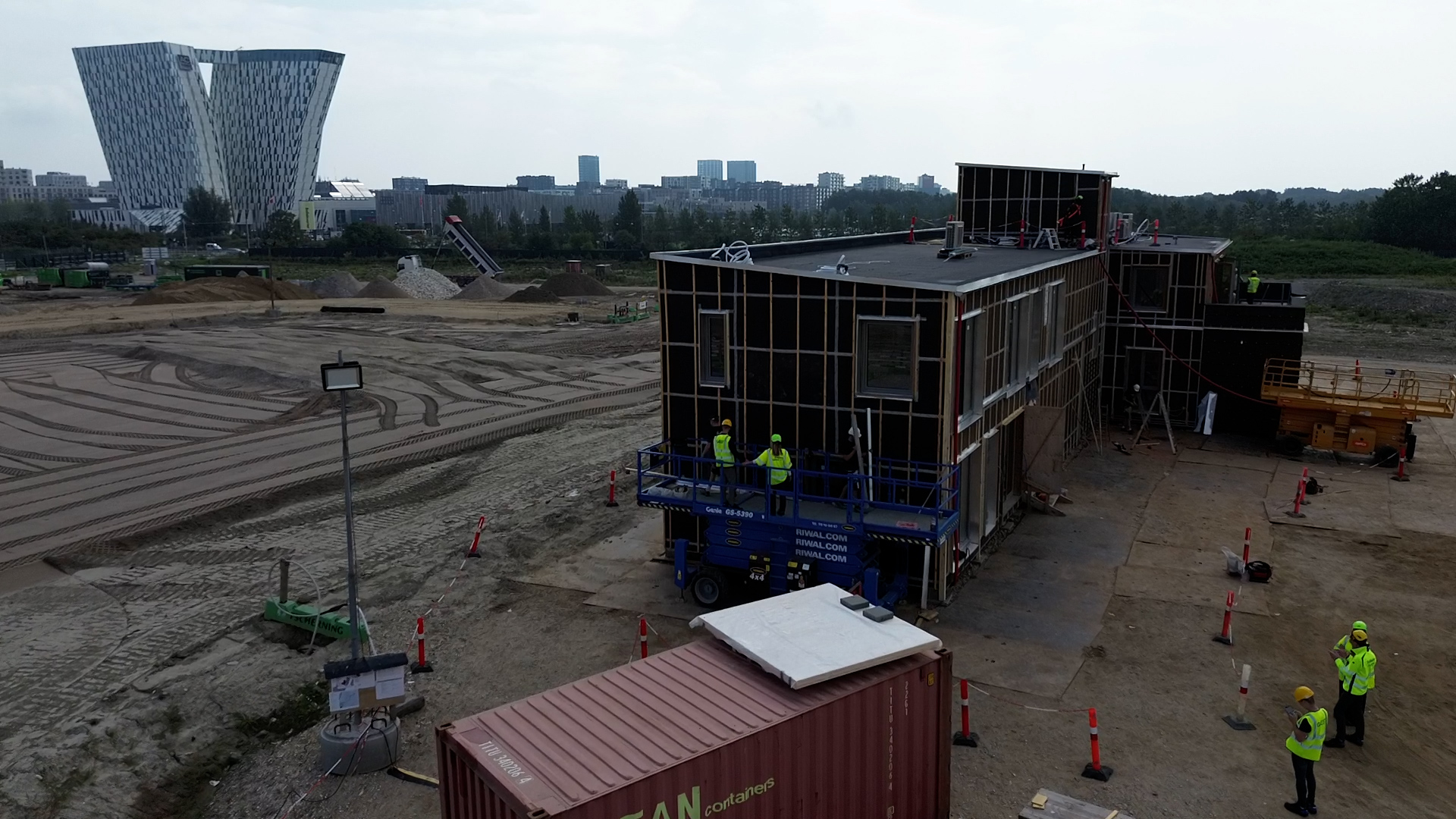
Construction of Fælledby has started in 2022 and is set to take 10 years until completion. /Dworschak/CGTN
Construction of Fælledby has started in 2022 and is set to take 10 years until completion. /Dworschak/CGTN
At Fælledby, steel beams and columns from the previous building on the site are being reused. "This project shows also a way into the future how big cities are going to be developed in a completely new way," designer Kongebro says. "Instead of just doing high-rise in concrete we'll have to find a new type of design where we can have all species flourishing: people and animals and plants."
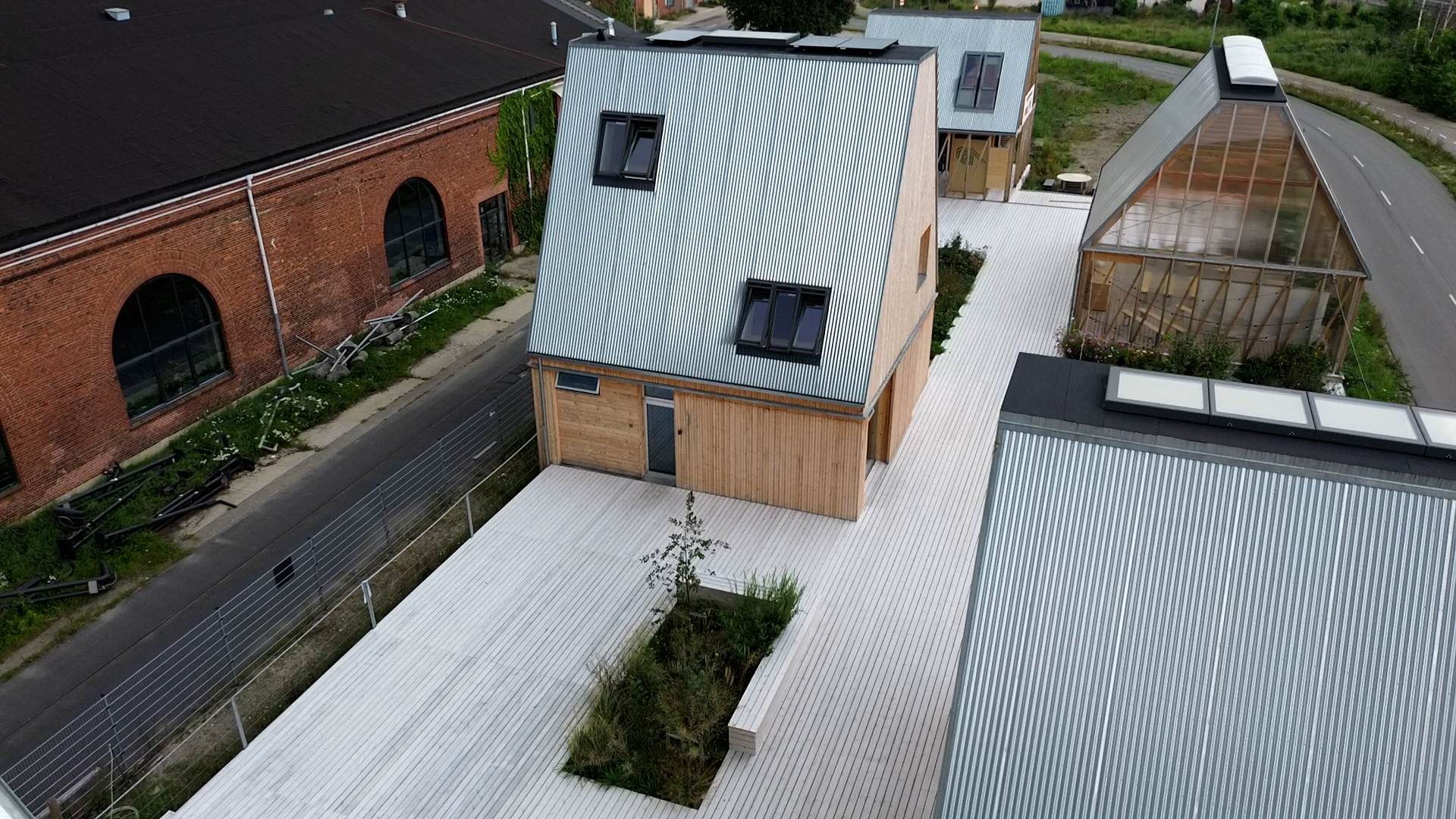
Another example of green Danish architecture is the low-emission 'Living Places' complex in Copenhagen. /Dworschak/CGTN
Another example of green Danish architecture is the low-emission 'Living Places' complex in Copenhagen. /Dworschak/CGTN
One of Henning Larsen's biggest current projects is transforming the Chinese city of Shenzhen. Working with two partner companies, the Danish firm has developed a green and sustainable master plan to reinforce the reputation of Shenzhen's business district – as China's main center for innovation.
"The importance is that it's actually taking up the whole harbor front and redeveloping that into a public area," says Kongebro. "So from being an industrial backside it's actually being a frontside for the whole bay area."
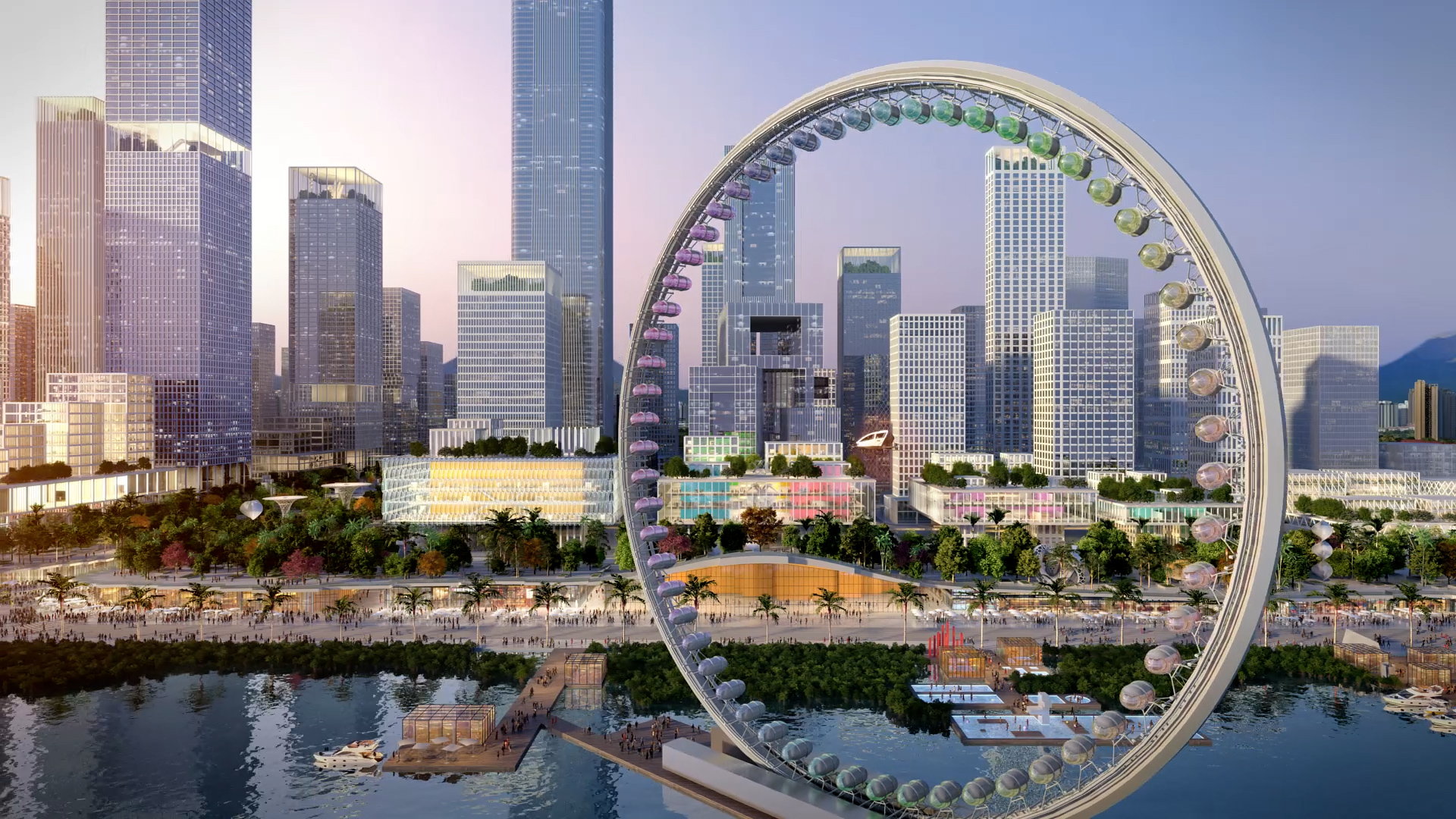
Shenzhen's new waterfront is set to host 10,000 trees, roof gardens and ground-level bioswales to help cool the environment and create habitats for birds and insects. /Henning Larsen Architects
Shenzhen's new waterfront is set to host 10,000 trees, roof gardens and ground-level bioswales to help cool the environment and create habitats for birds and insects. /Henning Larsen Architects
While Shenzhen's new waterfront is set to be finished in 2050, Copenhagen's Fælledby development is due for completion in about nine years. If the project is as successful as its designers envision, more biodiverse wooden communities like this might emerge around the world.
Subscribe to Storyboard: A weekly newsletter bringing you the best of CGTN every Friday